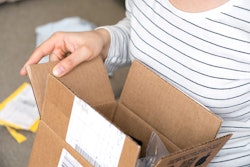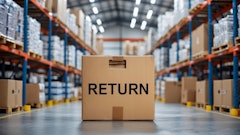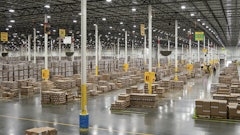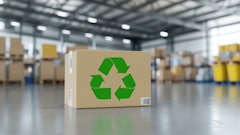
Efficient reverse logistics is the backbone of any modern, efficient supply chain. With the growing focus on reducing costs, maximizing efficiency, and operating sustainably, reusable transport assets (RTAs) have emerged as a crucial investment for shippers to optimize supply chains.
According to Global Market Insights, the global reverse logistics market is expected to reach $1.6 trillion by 2034, with the United States accounting for more than $253 billion of the global number. Without proper tracking and management of reusable transport assets, companies often find themselves grappling with inefficiencies, delays, and added expenses. That’s why RTAs have the power to revolutionize the reverse logistics market for shippers.
The pain points of reverse logistics
Reverse logistics has always been a complex process for any business. Once goods are delivered to a customer or retailer, their return or redistribution introduces an entire new layer of shipping challenges. At the center of these challenges lies the issue of tracking RTAs, such as crates, boxes, pallets, and other reusable assets.
Too often, shippers have little to no visibility into where their RTAs are located. For example, after delivering goods to retail stores, RTAs are frequently misplaced, left in backrooms, parking lots, or even discarded. Physically searching for RTAs at a facility is like searching for a needle in a haystack. When 3PLs or on-site teams must manually search warehouses, backrooms, or lots for untracked RTAs, hours are wasted. Shippers lose too much time and money chasing down missing assets while relying on incomplete or outdated manual processes.
Without real-time location tracking, shippers struggle to coordinate RTA pick-ups or ensure the availability of RTAs for returned assets. Carriers with empty trucks are dispatched multiple times just to retrieve missing assets. Instead of collecting all RTAs in one efficient trip, carriers may require two or three trips because they couldn't locate them during the first run. An easy-to-use wayfinding tool empowers shippers and third-party logistics (3PL) providers to seamlessly locate and utilize onsite RTAs.
The lack of visibility cascades into inconsistencies that hurt supply chain operations. A retailer might return RTAs from one location within days while another location holds onto them for months. The shipper, unable to predict asset turnover, is left with unreliable data, making it impossible to plan effectively for future shipments. Lack of visibility and inconsistent turnover often results in shippers either over-investing in RTAs to maintain buffer stock or facing delays due to insufficient assets.
These pain points reveal a shared frustration across the shipping industry—without knowing where RTAs are, companies can’t maximize their supply chain investments. Inefficient asset turnover may lead to disrupted deliveries, causing a ripple effect that impacts overall customer satisfaction. High-value, customized RTAs—such as reinforced pallets for hazardous materials or temperature-sensitive goods—represent substantial investments. The high turnover rate of RTAs, or lack thereof, directly correlates to operational efficiency. The more times an RTA can be reused within its lifecycle, the greater the return on investment.
The benefits of RTAs in reverse logistics
Investing in RTAs with tracking technology strengthens reverse logistics strategies and provides a competitive advantage. Shippers benefit from enhanced asset utilization through real-time tracking while reducing the need for surplus asset inventory. Cost-savings become operational and attainable, by minimizing transportation and labor costs across the board. Maximizing RTA reuse means fewer one-time-use materials like wooden pallets are discarded. This is both cost-effective and environmentally sustainable.
Reverse logistics, which often sees a spike during peak seasons like holidays, becomes faster and more streamlined for businesses. Shippers don’t want their supply chain clogged up by idle transport assets, especially when the demand for speed is at its highest. However, the biggest competitive advantage above the rest is the greater ROI that shippers see on RTA investments. With reinforced pallets and specialized crates costing millions of dollars in some cases, ensuring the efficient utilization of smart RTAs maximizes the value of every investment.
How smart technology works to optimize RTAs
Smart technology has revolutionized the ability to monitor RTAs in real-time. Location tracking technology plays a pivotal role in managing reverse logistics effectively. This technology allows shippers to see the exact location of their RTAs across the country—or even globally—on a dashboard. This "bird’s-eye view" ensures shippers know the whereabouts of every asset, whether it's in use, in transit, or sitting idle. Once a 3PL or carrier arrives at a retail location to pick up RTAs, Bluetooth technology helps locate the specific assets needed. Just like following a blue dot on a mobile map, employees can pinpoint the RTA location down to the exact aisle or corner of a warehouse.
In addition, smart technology provides more than just real-time location data. It monitors impact (detecting drops or shocks), tilt (indicating mishandling), temperature, and humidity. This data is particularly critical for temperature-sensitive or condition-sensitive goods. Shippers also proactively receive notifications when RTAs are sitting at sites for too long and which customers use RTAs in effective ways. This is where data and analytics become powerful decision-making tools that further drive operational efficiency.
Smart devices can function for over five years and are built to endure harsh industrial environments. Low power consumption and the ability to remotely update firmware ensure long-term reliability and minimal maintenance. This technology gives shippers an advantage to reduce (or even eliminate) manual processes, optimize asset reuse, and ensure higher accuracy in their logistics operations.
RTAs power the future of reverse logistics
The name of the game in reverse logistics is speed, efficiency, and reliability. With RTAs and advanced tracking technology, any company can turn a traditional pain point into a modern reverse logistics masterpiece. Whether you’re shipping electronics, managing hazardous materials, or simply looking to enhance your pallet operation, the adoption of smart RTAs is a crucial step for shippers aiming to bring logistics in-house and optimize reverse logistics.

![Pros To Know 2026 [color]](https://img.sdcexec.com/mindful/acbm/workspaces/default/uploads/2025/08/prostoknow-2026-color.mduFvhpgMk.png?auto=format%2Ccompress&bg=fff&fill-color=fff&fit=fill&h=100&q=70&w=100)







![Pros To Know 2026 [color]](https://img.sdcexec.com/mindful/acbm/workspaces/default/uploads/2025/08/prostoknow-2026-color.mduFvhpgMk.png?ar=16%3A9&auto=format%2Ccompress&bg=fff&fill-color=fff&fit=fill&h=135&q=70&w=240)








